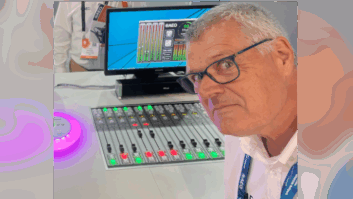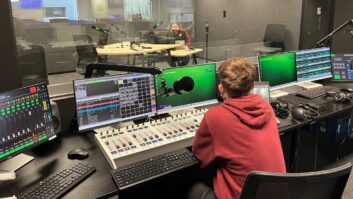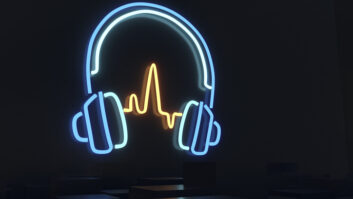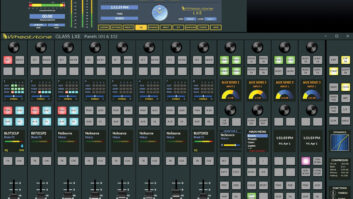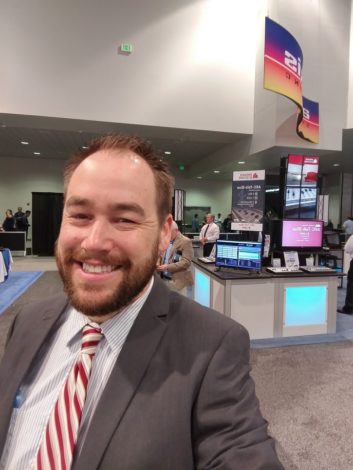
This is part of Radio World’s series exploring trends in radio broadcast consoles.
Ben Palmer is sales manager and engineer for Arrakis Systems. An earlier version of this article appeared in the RW ebook “Trends in Consoles.”
Radio World: What’s the top trend in consoles for radio studios?
Ben Palmer: The broadcast radio market is becoming more and more competitive every day. As such, stations are needing equipment that is more innovative, flexible and cost effective. The tools need to make the staff’s life easier but more dynamic. All the while, the installation needs to be user- and engineer-friendly.
Our ARC series analog boards broke the price barrier years ago. And adding features like USB, Bluetooth, Cat-5 wiring … it has continued to meet most studios’ needs. The ARC series has continued to be feature-rich, and helped keep new installation costs down.
AoIP has been a great step forward in our industry. It has simplified wiring, and has amplified flexibility. Our personal focus has been to make AoIP more affordable, and available to all. We introduced Simple IP over 4 years ago, and now pair it with our DARC Virtual Software Console & DARC Surface line. These are extremely cost-competitive for the AoIP market and, with Dante and AES67 protocols, will work with any system.
[Read “How to Choose Your Next Radio Console”]
The DARC Virtual is a software-based board, and it is becoming more and more common for studios to use touchscreens. Yet we are finding that an equal portion are wanting a physical surface, which is why the DARC Surface does so well.
We feel like software consoles will become more and more affordable, and will add to the flexibility of the modern radio studio. The hardware interfaces will become more and more affordable, as we continue to innovate the manufacturing process and development. It is an exciting time in radio.
RW: What demands do you hear from potential buyers?
Palmer: Connectivity. People want to connect themselves, and their devices easily, while being inside and outside the studio. When we introduced Bluetooth to our boards, we found that the majority of our users want the ability to wirelessly connect their devices. It made it so simple to pair a phone, a tablet or a recording device. It was much the same with the USB channel on our ARC boards. Connect your Windows or Mac PC, and play anything you want. No need to mess with complex wiring or switches.
Owners, along with their talent, are also wanting to be able to reach their studio from anywhere. We are seeing this with the software consoles, such as the DARC Virtual. With it, you can sit at home and manage your studio’s board remotely. People want their devices to easily connect, but also want to control their board from anywhere.
RW: What role does the console play today when planning a broadcast studio?
Palmer: The radio console is the main hub and foundation for your studio. It is where any engineer should start for their design, and should meet the current and future needs of your buildout. Considerations should be made for what a studio will need 5 to 10 years down the road. But don’t stress about this. Realize that you can start with what is needed today, knowing that expandability is very feasible while utilizing AoIP.
RW: How vibrant is the marketplace for analog consoles? How long will manufacturers of analog consoles support them?
Palmer: Analog consoles and equipment will be around for a long time. The beauty of AoIP is that you can connect any analog equipment to your network using nodes, such as Simple IP. So if you buy an analog board today, and expand your studios tomorrow, you can easily utilize AoIP with any existing analog studio. As it stands, you’ll need analog interfaces for your mics, headphones, etc. And even though touchscreens have helped foster the use of software consoles, there are still many who prefer the feel of a physical interface.
I believe that we will see analog boards for a long time, but we’ll continue to see a growing cohesion between digital and analog, such as with Bluetooth, USB, AoIP, etc.
RW: Any other thoughts for someone who is setting out to make a console system buying decision?
Palmer: Don’t put off replacing your old board, or buying that new studio. We often hear of stations nursing 30-year-old boards, or getting used boards off Ebay. The cost of your time, stress and energy maintaining old equipment adds up fast. Whereas, high-quality brand-new boards are extremely affordable today.
The best part is, new boards are now future-proof. You can easily start off with a smaller system, but then expand using AoIP. For example, you purchase an ARC-10 console today. A couple years down the road you add a couple new studios and want the DARC Virtual console while utilizing AoIP. Just add a Simple IP (or Dante AVIO) node which connects your ARC-10 sources to the Dante network. With a simple ethernet network, you just connected multiple studios and your audio is accessible anywhere.
With the affordability of new equipment, and it being future-proof, there is no reason to wait. Don’t be intimidated, and make the move.
